.
When members of Jimmy’s family told Jim McQuade, Director of Schuyler Hill Funeral Home, that, at Jimmy’s request, we were having neither priest nor funeral mass, he warned us that we might have trouble getting Jimmy into St. Raymond’s Cemetery. He proved prophetic. Growing up, Jimmy and I had been thrown out of a couple of Bronx taverns, but getting barred from the graveyard was a new experience. In lieu of a priest, I had been invited by Jimmy’s family to give a eulogy. “That would be fine,” said Jim McQuade, as we sat at a table; I could “just briefly sum up Jimmy’s life.” We laughed because, more than anyone I’ve ever known, Jimmy’s life was not one to be glibly summed up. Everyone thought they knew Jimmy; but they knew only aspects of the whole, complicated man. His life, rich and multifaceted, fell into many different, apparently incompatible phases. Yet there was an underlying integrity, in both senses of that word.
Jimmy had been a hell-raiser and legendary fist-fighter growing up; then a father who raised one son early, and later two young children single-handedly when their mother, Sharon, died young. Professionally, he was chief consulting engineer for the Bronx from 1980, and was in charge of the capital budget program, overseeing money allocated for such construction programs as the Grand Concourse rehabilitation and the parks improvements from Hunts Point to Riverdale. “But he was a lot more than that to me,” said former Borough President Fernando Ferrer. “He was indispensable.” As the go-to person for district leader Michael Benedetto, Jimmy handled housing and zoning issues; in addition, demonstrating Assemblyman Benedetto’s description of him as a “tremendously giving person” who quietly helped many people, Jimmy, each year, did the income taxes, gratis, of more than a hundred seniors who couldn’t figure out the forms or afford to pay a professional.
After retiring in 1995, Jimmy stayed on for almost two decades with the borough president’s office as a part-time consultant. In these years, he also taught physics at Bronx Community College. As engineer and architect, Jimmy created—pro bono—the building now housing the Chippewa Democratic Club, of which he was treasurer for more than 40 years. Still vital, energetic, and physically powerful, Jimmy was, in 2005, diagnosed in a late stage of a particularly horrible form of incurable cancer. It was in valiantly battling multiple myeloma for ten years (which must be the world’s record) that we all saw Jimmy’s stamina and real courage. So, is there any key that helps explain so varied a life? Not really, but let me make a tentative triple-suggestion that will seem strange to those who didn’t know the “whole” Jimmy: strength, stars—and pigeons.
From the time he was a kid, Jimmy had a coop, and flew pigeons. Later, residing in Locust Point, he had a flock that numbered almost two hundred. Jimmy and his sons David and Alex lived very near the Throgs Neck Bridge, its under-structure a favorite nesting place for peregrine falcons and hawks. Jimmy flew his pigeons every day and loved how they out-maneuvered the predators, making undulations and quick turns in the air, so that it was almost impossible for a falcon or hawk to kill one. (When many were killed, including Jimmy’s pair of beloved black homers, it was not by a hawk, nor by the family of feral cats Jimmy fed daily, but by a raccoon who got into the cages.) Once, a frustrated brown hawk pursued some pigeons right into those cages. Jimmy’s first instinct was rage, but he quickly appreciated the magnificence of the hawk and he knew that it, too, had its part to play in the natural order. So he kept it for a day or two, admiring, studying, and photographing it.
As for strength: When we were growing up, Jimmy was himself a hawk, a warrior who never lost a fight even against much larger opponents. I’ll give just two examples, but they represent many stories of Jimmy’s almost mythical prowess as a fighter. My neighborhood, Alden Park, had (laughably enough) a so-called private beach, consisting of a pier and about 50 yards of water. Once, when we were sixteen or so, Jimmy came over to hang out with me. We went down for a swim. An older guy, a blond and brawny 6-foot, 220-pound wire-lather, informed Jimmy, who weighed about 145 at the time, that this was a private beach and that he wasn’t welcome. Jimmy started to leave. But the Big Man couldn’t leave well enough alone: “And don’t come back, you little guinea.” About ten seconds later, Jimmy did leave; but they had to carry the wire-lather home. Jimmy, 75 lbs. lighter and 3 inches shorter, had cut him down with a half-dozen lightning-fast punches that left the would-be hero and actual bigot sprawled and bleeding on the pier.
On another occasion, a year or so later, Jimmy faced down even bigger odds. In a nocturnal raid, we had snuck into a pool and concession called Bronx Beach and stolen 17 cases of beer. Having “borrowed” a rowboat, we transported our booty to a small cabin cruiser moored off a waterfront stretch called Big Oak. The plan was to return early the following morning and move our goods to a safe location. Unfortunately, when we arrived shortly after dawn the boat was gone. We discovered that the owner and his friends (who must have thought they’d died and gone to heaven) had left for Oyster Bay on the north shore of Long Island to fish and camp out. A few days later word reached us that they were back and were having a grand time in what was then an orchard that sloped down to our own Bay, not really a “bay” since it opens onto the Long Island Sound. When Jimmy and I arrived and peered through the foliage we saw eight guys and their girlfriends listening to music and enjoying “our” beer. This was a moral outrage, a violation of the code of honor among thieves. We jumped the fence and Jimmy walked right up to the biggest guy, the fellow who owned the boat we’d used for temporary storage. “The party’s over,” Jimmy announced, ordering the leader to pack up the beer, put it in one of their cars (we were carless) and take it to where we wanted it. Even with their girlfriends present as witnesses of their humiliation, he and the others complied. Even at odds of 8-2, they were afraid to tangle with Jimmy.
Back then, he seemed all strength and speed. The first time we ever saw a set of weights, Jimmy, 14 years old and weighing about 140, military-pressed 20 pounds or so above his body-weight, astonishing the older guys who owned the barbell. He ran the 100 and 220 at Cardinal Hayes, winning at both distances; and once, at a Rice Stadium meet where I was running the 440 for St. Helena’s, Jimmy was asked to substitute for an injured shot-putter. I watched amused as Jimmy, a complete novice at the event, outdistanced the competitors, but was disqualified on all three shots, one of which was so off it actually grazed someone in the audience.
But under all that physical power there were other, deeper qualities. Jimmy had a formidable brain, and dreams. When he and I weren’t getting into trouble, we often sat on the sea-wall, gazing at the opening to Long Island Sound off City Island, looking out at the beautiful green lantern of Stepping Stone Lighthouse, and up to that greater lighthouse, the stars above our heads. In time, Jimmy would know almost everything there was to know about the birth and death of stars, as well as about black holes, special and general relativity, and quantum mechanics. Back then we would discuss “escape velocity,” the speed a rocket would have to attain to break earth’s gravitational pull: 7 miles a second. And this was long before John F. Kennedy pledged to send a manned rocket to the moon and back.
Earlier this week, when Alex invited me to look through his father’s books, I was re-reminded of the range of Jimmy’s interests. There were books on the Bible, and on Jesus alongside volumes on the universe, on string theory and quantum mechanics; several books on Einstein; on history and philosophy; novels, poetry, books of literary criticism (not all, but most by me, since Jimmy was as proud of me as I was of him). From the time he was a boy, Jimmy was what Samuel Taylor Coleridge called an “Inquiring Spirit,” especially when it came to questioning, from the perspective of science (physics and evolutionary biology) the religion in which we had both been raised and long believed. In later years, he was particularly fond of two passages I’d cited in my book on Emerson. In his essay “Intellect,” Emerson posed a choice between “Truth and Repose.” He who simply accepts the comfortable “creed” he has inherited will find rest,
but he shuts the door to truth. He in whom the love of truth predominates will keep aloof from all moorings, and afloat. He will abstain from dogmatism, and recognize all the opposite negations, between which, as a wall, his being is swung. He submits to the inconvenience of suspense and imperfect opinion, but he is a candidate for truth, as the other is not, and respects the highest law of his being.
This passage had a momentous impact on the lives of both Emily Dickinson and Emerson’s greatest disciple, the German philosopher Friedrich Nietzsche, both of whom were raised in deeply religious families. Nietzsche, the son and grandson of Protestant ministers, echoed Emerson’s thought, and choice, in a youthful letter to his sister. Should we, the twenty-year-old Nietzsche asked rhetorically,
arrive at that view of God, world, and reconciliation which makes us feel most comfortable?….Do we after all seek rest, peace, and pleasure in our inquiries? No, only truth….Faith does not offer the least support of objective truth. Here the ways of men part: if you wish to strive for peace of soul and pleasure, then believe; if you wish to be a devotee of truth, then inquire.
Restless (as his sister Barbara told us) from the time he was a colicky baby, Jimmy never, ever sought “repose,” either in his life or in his intellectual inquiries. I should have added that his library included, along (of course) with studies of pigeons, books on aviation. When, after he got out of the Marines, Jimmy was living with his wife Beth and their baby, Jimmy Jr., in a trailer in Moonachie, N.J., he was working full-time and studying for his engineering degree. Yet he somehow found time to learn to fly a plane! Why? Well, pigeons fly, don’t they?
Armed with his engineering degree, Jimmy eventually rose through the ranks of the New York City Highway Department and other positions to become chief engineer of the Bronx, working, as I said, out of the Borough President’s office. Whatever lunacy and law-breaking we engaged in growing up, once Jimmy was in a position of power, he proved incorruptible. As many told me at one of his retirement parties, Jimmy’s word was his bond. His agreement over the phone could be, literally, taken to the bank. Many projects in the Bronx are the visible results of Jimmy’s efforts. As boys looking up at the stars, we talked about escape velocity; but Jimmy, unlike the rest of our crowd, never wanted to escape from the Bronx. Instead, he wanted to stay and improve it. And he did. As current Borough President Ruben Diaz, Jr., remarked in his tribute: “James Cerasoli gained the respect and admiration of all through his tireless work in the Bronx. His signature is imprinted on numerous maps; his work and his memory will live forever.”
That most endearing of Jimmy’s qualities—his intense and lifelong love of animals—bore enduring fruit in improvements to the Bronx Zoo. In charge of the capital budget, Jimmy made sure the Zoo got its share and more of the borough funds. Our close-knit crowd of two dozen, which has kept in touch for six decades, always loved the Zoo as kids; for us it was an oasis, a Magic Kingdom. When Jimmy and I, with my own family, visited it as adults, Jimmy was treated like a king by those who appreciated his support. Why was the Zoo such a priority? Of course, it was the borough’s main tourist attraction. But for Jimmy, it was personal. The bank robber Willie Sutton was once asked why he robbed banks. His answer was as famous as Willie himself: “that’s where they keep the money.” For Jimmy, the Zoo was where they keep the animals and, if they had to be in confinement, he wanted to do what he could to insure that they were kept in state-of-the-art comfort and able to enjoy maximum freedom. The big cats are no longer in cages.
The one photograph his sons submitted for Jimmy’s newspaper obituary shows him, a quarter-century ago and looking much younger than his 52 years, feeding deer at the Catskill Game Farm (closed, sadly, in 2006). As his son David rightly said, the photo exemplifies Jimmy’s love of animals. I think that love of animals, especially his doting on his pigeons, even helps explain Jimmy’s liberal politics; he always championed the underdog rather than the predatory and powerful. His pigeon-skills certainly honed the qualities that made this tough athlete and undefeatable street-fighter a loving and nurturing caregiver when he was left with two young boys to raise on his own. He had learned whatever he needed to master in order to care for his pigeons; now he learned whatever he needed to know to take care of his boys—even learning to cook, and to cook well.
Jimmy’s final decade was incredibly difficult, but he fought this terrible and terminal disease with the same courage and skill that he’d once displayed in fist-fights. (He studied multiple myeloma, and soon knew as much about it as his doctors). In this battle, however, he had the support and love of a close-knit family: his sisters Barbara, Arlene and Pinky, his brothers Hank and John and his young sons David and Alex. For years every Friday was set aside by Hank and John for lunch with Jimmy at a restaurant of John’s choosing. When I was visiting from upstate, I was invited to join them.
Jimmy Jr. and his wife and three children lived far out on Long Island, but for Jimmy’s 75th birthday, the whole family got together, and again I was invited. Ironically, Alex, who had been at his father’s side virtually every day since he’d been diagnosed with multiple myeloma, had to be in Florida. But it was good that the rest of us were there, since, just a year later, young Jimmy suddenly died of a heart attack. This was, in many ways, the last twist of the knife. I came down for the first of two wakes, right here at Schuyler Hill. But Jimmy (burdened with an oxygen tank that embarrassed him and which he relegated to Jim McQuade’s office rather than draw attention to himself) had to endure a second wake and funeral out on Long Island. When I came over to the house the next day, and asked the stupid but inevitable question as to how it had gone, he said, “Pat, I felt feelings I didn’t know I had.” Alex told me that that was the beginning of the end for Jimmy; that much of the fight—and it had been a long and brave fight—went out of him. David, Hank, and John agreed, and I sensed it myself, though Jimmy tried to maintain a stoic front. I can’t talk here about David’s and Alex’s own relationship to their father because I will be reduced to uncontrollable tears—as Alex was at Jimmy’s deathbed while David, my godson, tried to hold it together.
Terrible as that death was, it was peaceful, and Jimmy, who we think was able to hear us, was surrounded by those who loved him—no small thing. It seemed to me at the time, and even more so today, that it was particularly appropriate that when his time came, he died in a hospital named for his intellectual hero, Albert Einstein. The last long conversation I had in Jimmy’s kitchen (I’ll tell you in a moment about our last phone conversation), we talked about Walter Isaacson’s book on Einstein. I knew why Einstein had (one of his few errors) rejected quantum mechanics; but Jimmy actually understood quantum mechanics! Though Einstein acknowledged that it explained much, he could never bring himself to accept quantum theory because it was random and Einstein was committed to strictly determined mathematical laws of nature. As he famously said, quantum theory “says a lot, but it does not really bring us any closer to the secrets of the old one [der Alte]. I, at any rate, am convinced that He does not play dice with the Universe.”
That kind of God-talk led many—especially in his adopted country, America, where he was much beloved and had become a pop-culture icon—to conclude that Einstein believed in a personal God, one who cares about us, is accessible to prayer, and promises (for good or ill) an eternal Afterlife. Einstein did not believe in such a deity. In a letter written to a little girl in the sixth grade who wanted to know, “Do scientists pray?” Einstein, endearingly, took her question seriously. He responded that scientists are not likely to be inclined, in a world where “everything that takes place is determined by laws of nature,” to believe “that events could be influenced by prayers to a supernatural being.” Nevertheless, he continued,
Everyone who is seriously interested in the pursuit of science becomes convinced that a spirit is manifest in the laws of the universe—a spirit vastly superior to that of man, and one in the face of which we with our modest powers must feel humble. In this way the pursuit of science leads to a religious feeling of a special sort, which is indeed quite different from the religiosity of someone more naive.
His God, Einstein told the New York Times, was “Spinoza’s God,” a divinity inseparable from Nature itself—though he was also convinced, like that sublime and “god-intoxicated” yet “atheistic” 17th-century Jewish philosopher, that no matter how we try to “penetrate with our limited means the secrets of nature,” we find that, “beyond all the discernible laws and connections, there remains something subtle, intangible, and inexplicable. Veneration for this force beyond anything we can comprehend, is,” said Einstein, “my religion.” That “humble admiration” and “deeply emotional conviction of the presence of a superior reasoning power, which is revealed in the incomprehensible universe, forms my idea of God.” Introduced to the philosophy of Spinoza by his friend Coleridge, William Wordsworth, in “Tintern Abbey,” captured that “presence” (the essence of Spinoza’s pantheism) in deliberately vague but deeply moving lines:
MMMMAnd I have felt
A presence that disturbs me with the joy
Of elevated thoughts; a sense sublime
Of something far more deeply interfused,
Whose dwelling is the light of setting suns,
And the round ocean and the living air,
And the blue sky, and in the mind of man:
A motion and a spirit, that impels
All thinking things, all objects of all thought,
And rolls through all things.
In 1930, Einstein concluded his credo, “What I Believe,” by defining what he actually meant in calling himself “religious”:
The most beautiful emotion we can experience is the mysterious. It is the fundamental emotion that stands at the cradle of all true art and science. He to whom this emotion is a stranger, who can no longer wonder and stand rapt in awe, is as good as dead….To sense that behind everything that can be experienced there is something that our minds cannot grasp, whose beauty and sublimity reaches us only indirectly; this is religiousness. In this sense, and in this sense only, I am a devoutly religious man.
In that sense, and that sense only, Jimmy, an inquiring spirit in the mode of Spinoza and Einstein, was a devoutly religious man—to the very end of his life and beginning from the time when, as kids, he and I gazed out on the water on moonlit or starry nights and then up to the stars themselves. When we were rummaging through Jimmy’s books, Alex showed me something his father had inscribed on the library wall, and which Alex intends to carve out and save: “My improbable God: before Infinity, there is God; after Infinity, there is God.” If that’s not good enough to get into the “religious” cemetery, to hell with them.
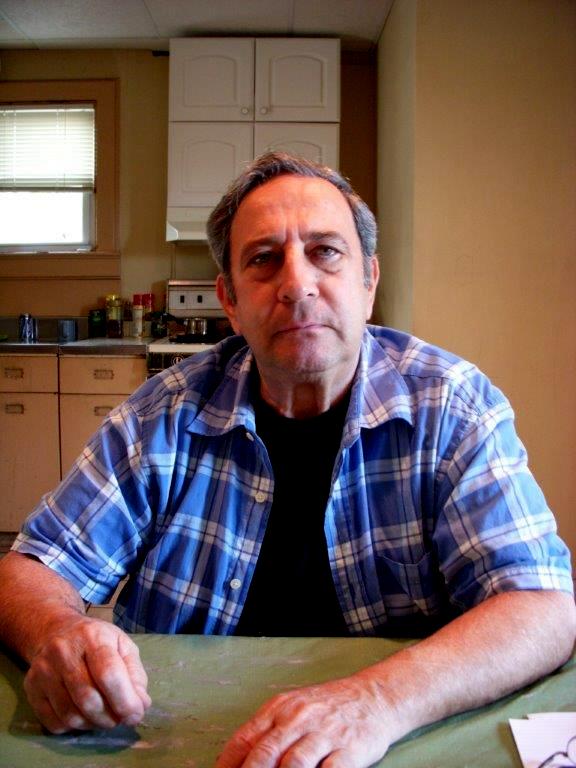 Jimmy facing reality at the kitchen table he was practically chained to in the final years.
Jimmy facing reality at the kitchen table he was practically chained to in the final years.
I’ll end with that last phone call, and with the final lines of a Wallace Stevens poem, both of which involve deer and, of course, pigeons. I phoned Jimmy one day while I was looking out the window at my back yard. Out on the lawn were three deer, a few squirrels, two mourning doves and two pigeons. “How are they interacting?” Jimmy asked, the old enthusiasm still there despite the pain. “Harmoniously,” I said. But the peaceable kingdom was interrupted. There’s a 100-foot spruce in my yard and a huge female goshawk (bigger than the males of the species) often nests there. She swooped down. The deer were unnerved, the squirrels scampered to safety, and the mourning doves ducked into the hedge. But the pigeons took off with the hawk in fierce pursuit. I was disturbed, but Jimmy assured me, “don’t worry, she’ll never get them.” He was right.
This scene prompted me to quote to him over the phone the final lines of Stevens’s “Sunday Morning,” a poem centered on a woman who does not go to church that morning, but instead seeks her religion in nature. She finds herself in what the poet calls in the final stanza “an old chaos of the Sun, unsponsored”: a beautiful but perishable universe in which we must all die. This is our mortal condition; what are our consolations? Jimmy loved the ending of the poem, finding in it, along with the appreciation of deer and birds, a beautiful and brave death-image, an image that applies, as my friend Barron Boyd recently remarked, to Jimmy’s characteristically courageous acceptance of his own impending descent:
Deer walk upon our mountains, and the quail
Whistle about us their spontaneous cries;
Sweet berries ripen in the wilderness,
And, in the isolation of the sky,
At evening, casual flocks of pigeons make
Ambiguous undulations as they sink,
Downward to darkness, on extended wings.
Jimmy, who seemed unconquerable, is gone. But nothing can erase, as Borough President Diaz noted, Jimmy’s permanent “signature imprinted” on the Bronx. That “will live forever,” as will the memories that will be preserved—until our own deaths—in the hearts of family and friends who loved and valued this remarkable and many-sided man. And I will think of my brother-in-spirit as inextinguishable in a more profound sense. When, without that funeral mass, we were denied permission for burial in the Catholic cemetery, we decided to have Jimmy cremated. Back in 1957, when he was 19, Jimmy shared with me a now famous essay in which four astrophysicists argued that the iron in our blood, the calcium in our bones, the oxygen we breathe, are the remnants, the ashes, of stars that died in supernova-explosions billions of years ago. When, this summer, we scatter Jimmy’s ashes in Long Island Sound, it will be into water we now know derived in part from a titanic gas cloud older even than our solar system. Out on Hank’s boat, we will be returning Jimmy to the world of nature he loved, and to the cosmos that fascinated him, stardust back to stardust.
Pat Keane/ April 10, 2015
.
Afterword: For David and Alex
I returned to Syracuse in time on April 11 to make, I thought, a Curlew Theatre play about W. B. Yeats, for which I’d written an introduction and which was scheduled to be performed at Le Moyne College at 7pm. I didn’t know that while I was in New York City for Jimmy’s death and wake, the time had been changed to 4pm. It was good that I didn’t know, because something rather wonderful happened in my walk over to the college—as I told Kate Costello-Sullivan, Le Moyne’s Dean of Arts & Sciences, in the following email, which I’m now sharing with you.
Dear Kate,
Unaware that the play had already been performed, I left for the college at 6:50. I was walking due west on Salt Springs, thus directly into the setting sun. As I came over the rise in the road, I suddenly found myself looking at 7 or 8 deer: they were just standing there, stopped in the midst of crossing from the college side. I heard two cars coming fast, maybe 100-150 feet behind me. Between the brightness of the sun and the fact that the deer were just over the rise, neither driver could see what was ahead. I jumped out in the middle of the street and started waving. One driver slammed on his brakes, the other swerved onto a lawn alongside the road. The little herd of deer took off. The drivers understood.
When I got to the college, the doors were locked. I tried another possible venue, and that’s when I saw a poster, with the time, 4:00, and featuring a line excerpted from one of Yeats’s finest poems: “Man is in love and loves what vanishes.” I’d felt pretty good about the deer episode right off. But as I started walking back, it dawned on me that if I hadn’t been precisely where I was at precisely that moment, one or both of those cars would have plowed into the deer.
My friend Jimmy had been cremated that morning. As I’d emphasized in my eulogy, along with being a legendary fist-fighter when we were growing up, Jimmy was, among other things, a deep and lifelong lover of animals. Later, as Borough Engineer of the Bronx, in charge of the capital budget, Jimmy was responsible for many improvements in the Bronx Zoo. He hated the idea of animals in captivity; but if they were to be confined, he was determined to insure that they were comfortable and enjoyed maximum freedom. And they do.
Jimmy kept and flew pigeons from the time he was in grade-school; and on his last visit up to see me, he loved seeing the deer in my back yard. I ended my eulogy with the final lines of Stevens’s “Sunday Morning,” beginning, “Deer walk upon our mountains,” and ending with pigeons, at evening, making “Ambiguous undulations as they sink/ Downward to darkness, on extended wings.”
I don’t believe in miracles, but I’d been despondent walking over to see the play—a play that, as it happened, had already been performed. Thus, I had no reason to be on that road at 6:50. You apologized, Kate, for not getting my phone call in time to stop me. I’m obviously delighted that you didn’t. Walking back to my house, the more I thought about having “saved” the deer, the more elated I became. I remembered that little Robert Frost poem, “Dust of Snow”:
The way a crow
Shook down on me
The dust of snow
From a hemlock tree
Has given my heart
A change of mood
And saved some part
Of a day I had rued.
That’s what happened to me yesterday. The reminder that we still live “in nature,” with creatures other than ourselves, altered without erasing my sadness at the death of a friend I loved and admired, got in trouble with, and discussed literature and science and religion with, for two-thirds of a century. But last night, going to bed still thinking about those deer, I slept for almost 11 hours—more than the preceding five nights combined. Being on that road at 6:50 was a gift, and it comforts me, even as I’m writing these words, to think, intuitively rather than rationally, that it was a last gift from Jimmy, still watching out for the animals.
—Pat
.
Patrick J. Keane is Professor Emeritus of Le Moyne College and a Contributing Editor at Numéro Cinq. Though he has written on a wide range of topics, his areas of special interest have been 19th and 20th-century poetry in the Romantic tradition; Irish literature and history; the interactions of literature with philosophic, religious, and political thinking; the impact of Nietzsche on certain 20th century writers; and, most recently, Transatlantic studies, exploring the influence of German Idealist philosophy and British Romanticism on American writers. His books include William Butler Yeats: Contemporary Studies in Literature (1973), A Wild Civility: Interactions in the Poetry and Thought of Robert Graves (1980), Yeats’s Interactions with Tradition (1987), Terrible Beauty: Yeats, Joyce, Ireland and the Myth of the Devouring Female (1988), Coleridge’s Submerged Politics (1994), Emerson, Romanticism, and Intuitive Reason: The Transatlantic “Light of All Our Day” (2003), and Emily Dickinson’s Approving God: Divine Design and the Problem of Suffering (2007).
.
Click an image for a full sized version with caption.
.
.
.
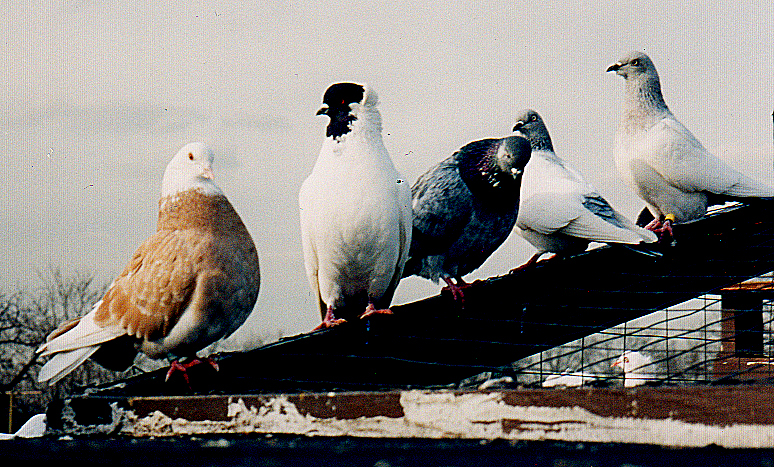
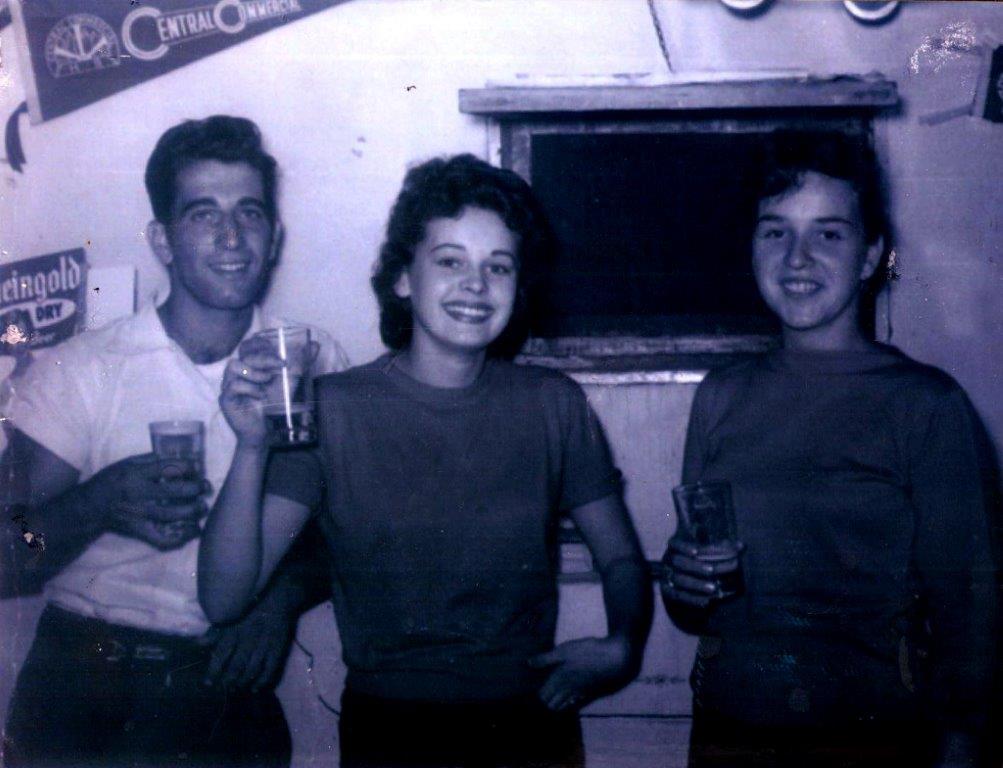
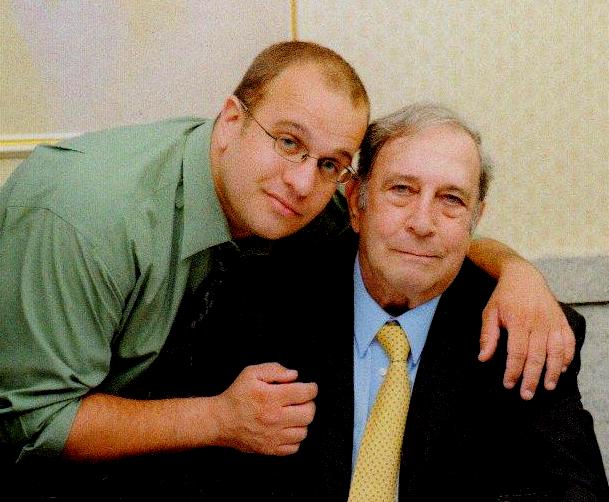
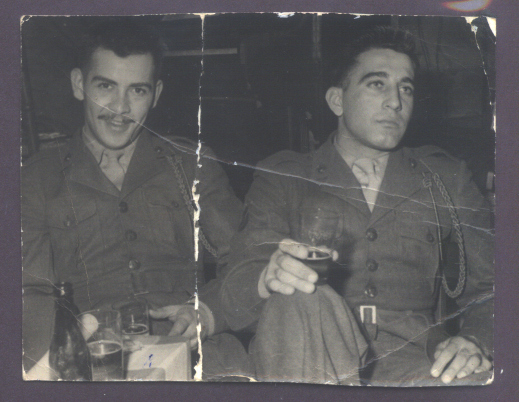
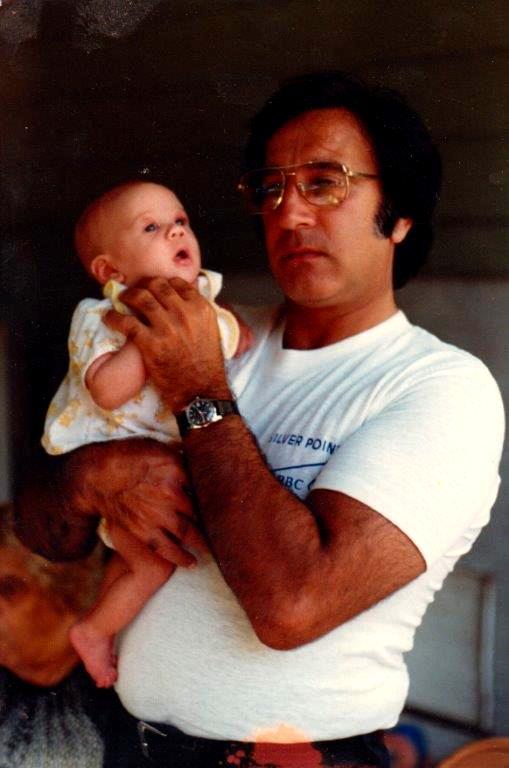


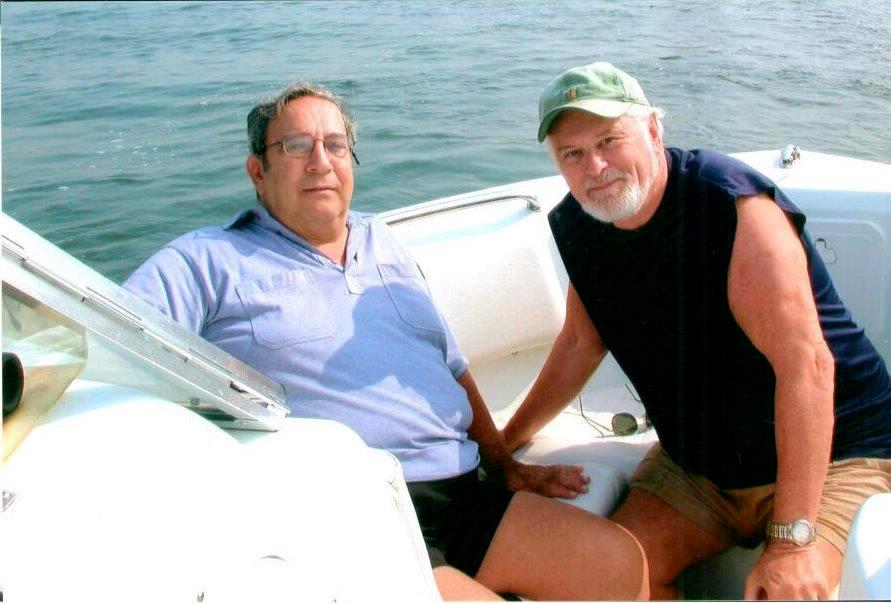




































I don’t think I’ve heard or read a finer eulogy. It helps, of course, that the subject and the writer are men with an abiding and strong friendship. I have met in print two men I like. This is art.
Thanks so much, Tom. I don’t think I’ve heard or read a finer compliment. My friendship with Jimmy also figures prominently in an earlier piece in my NC “Archive,” titled “Chiaroscuro.” Thanks again.
Thank you Pat for bringing me to an endearing eulogy honoring a long time friend, classmate, track teammate and fellow marine. Jimmy was a complicated person, and you were probably the only friend who was able to understand and explain the many jimmy’s. The cerasoli family were and are wonderful people, starting with mom and dad. I enjoyed many a Sunday dinner in their home. Matt Meagh
Matt, I didn’t realize that respinses could still be printed on this site. Thanks for yours.
I’m reading this on February 7, 2021, and I’m going to phone you when the hour is decent. Pat
Pat, We haven’t met, but I am very moved by this piece. What a beautiful eulogy. I believe my mother knew Jim, way back in the day (she passed away in 2008) her name was RoseMary and you all lived in the same area of the Bronx. Would love to email you to ask a few questions. Thank you – Gina
Pat, I am just testing to see if you received my previous note. I would love to talk with you about this piece. It’s really wonderful. Please reach out via email when you can. Thank you so much – Gina